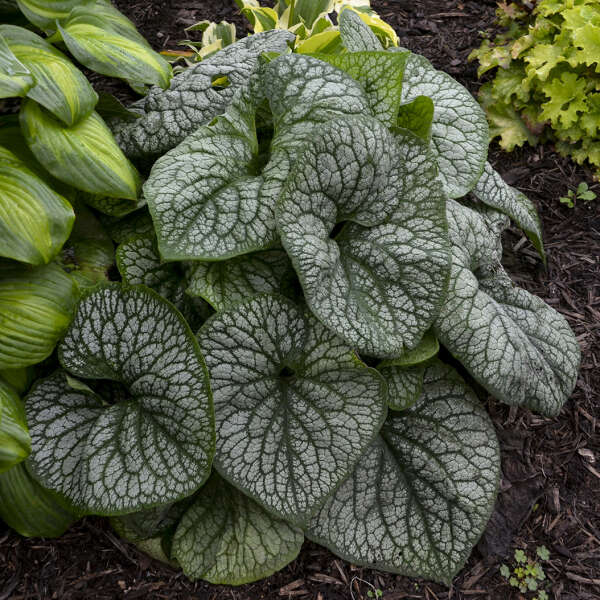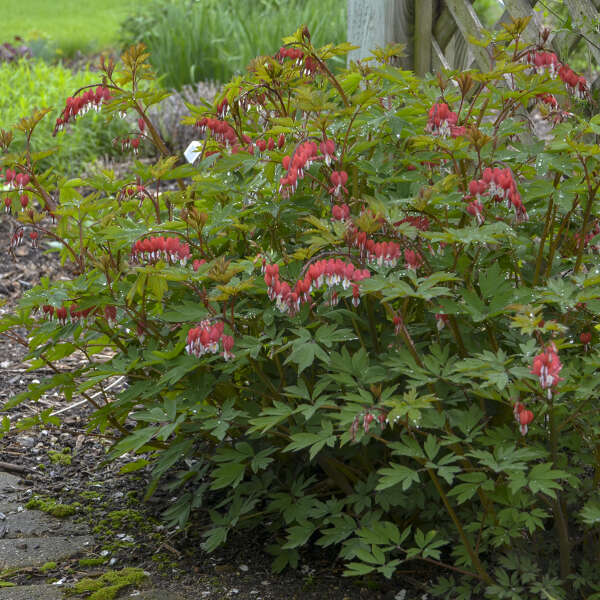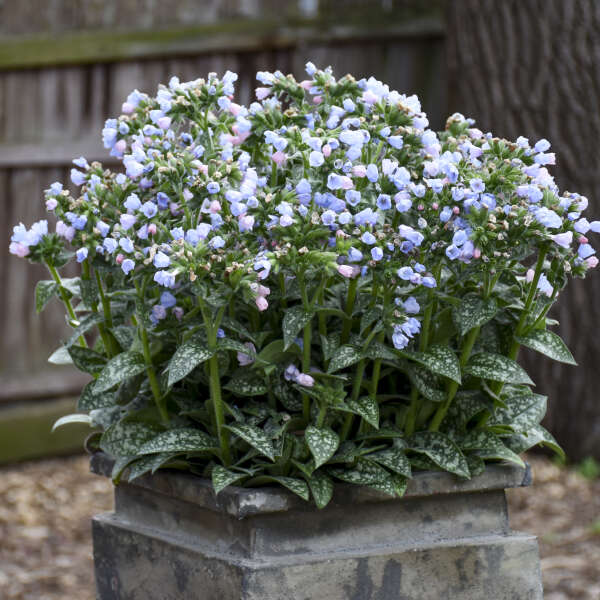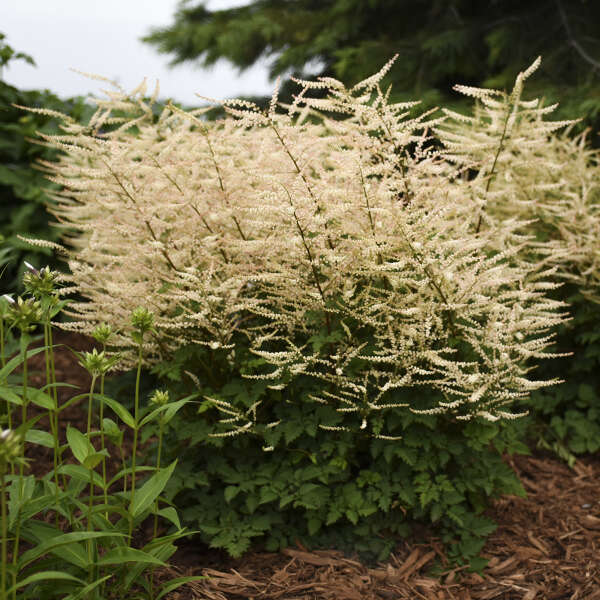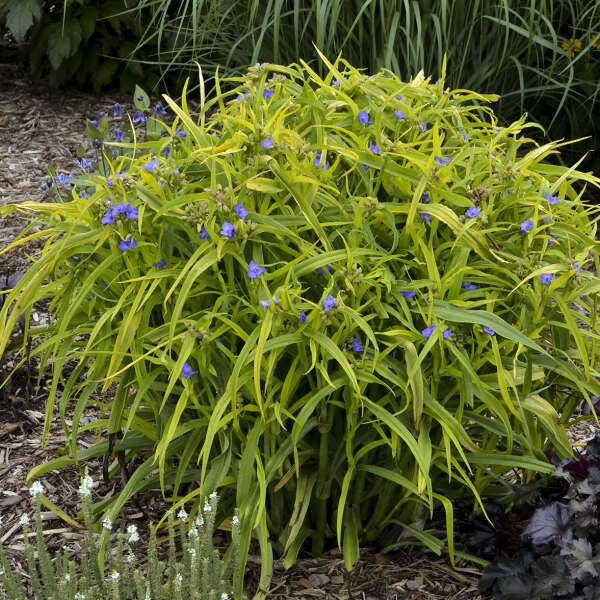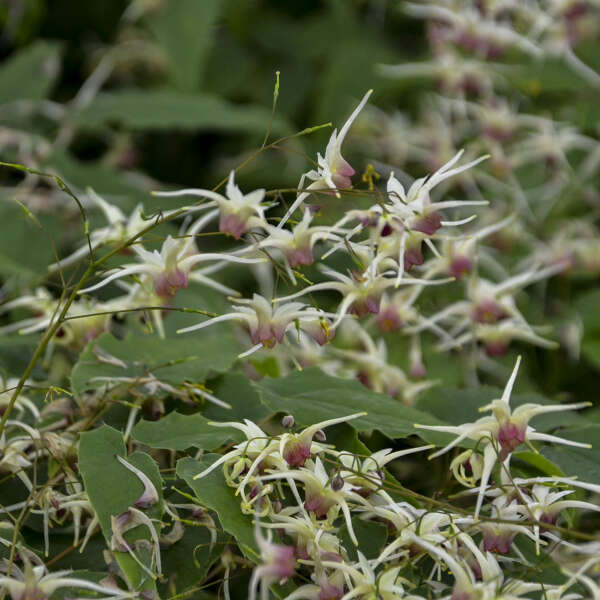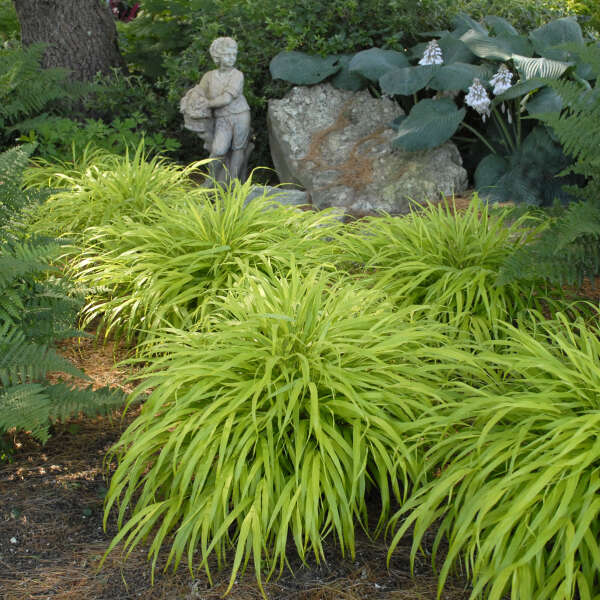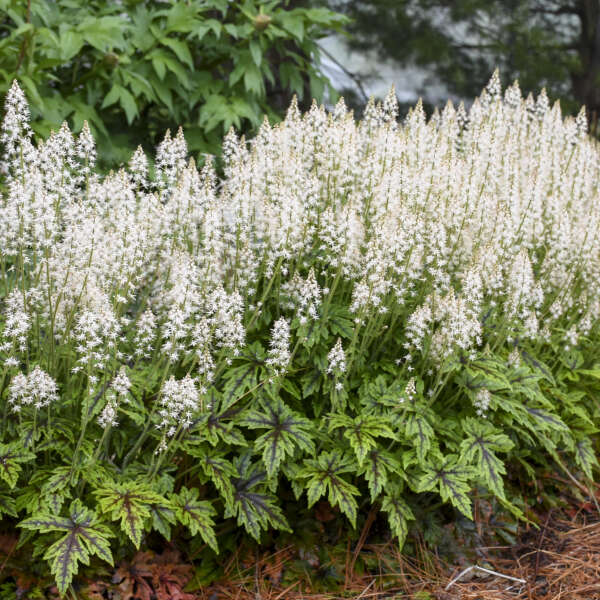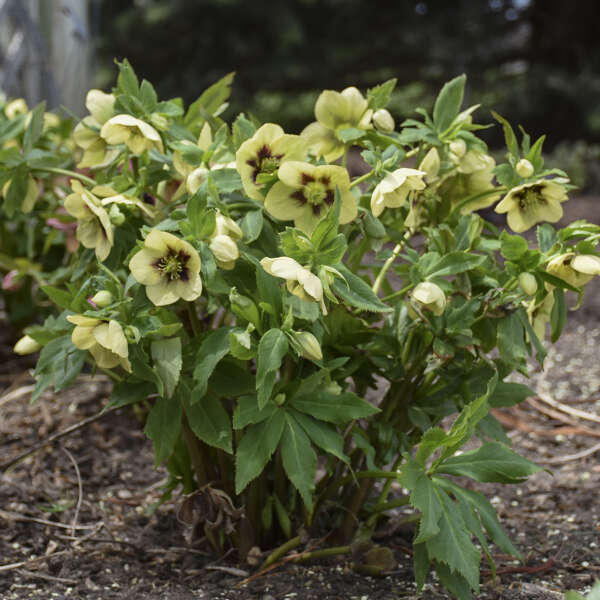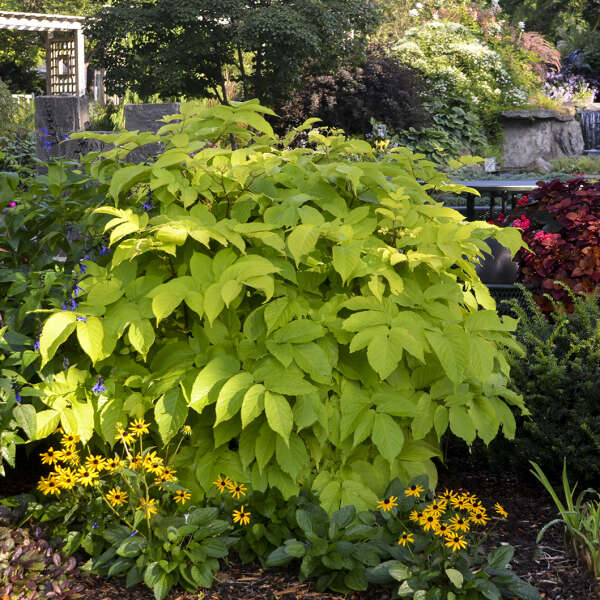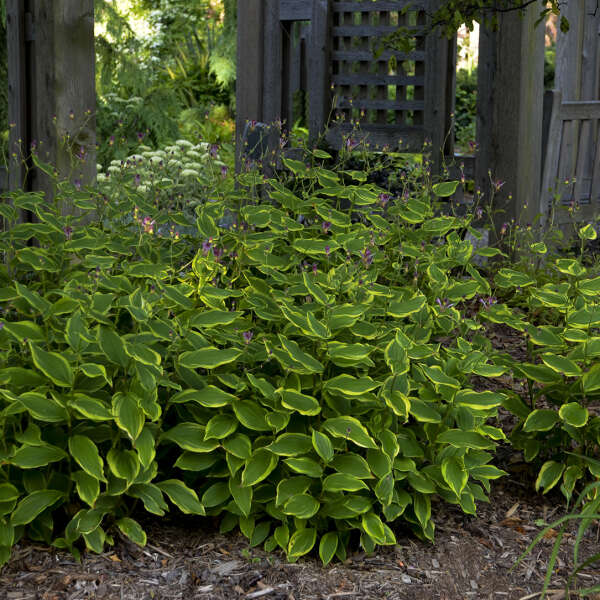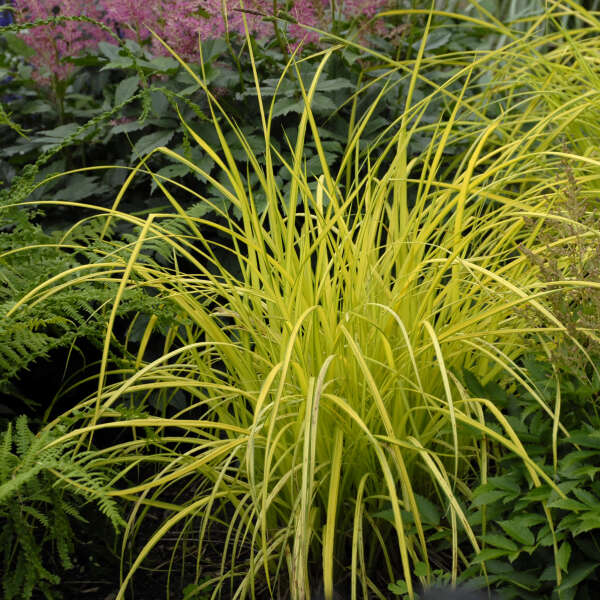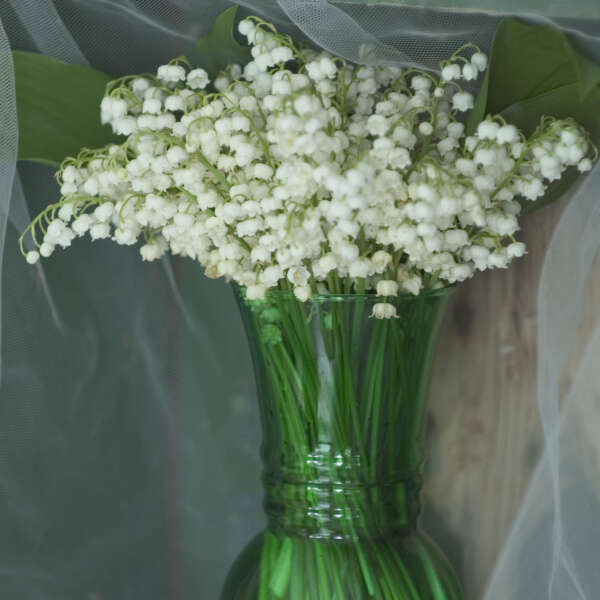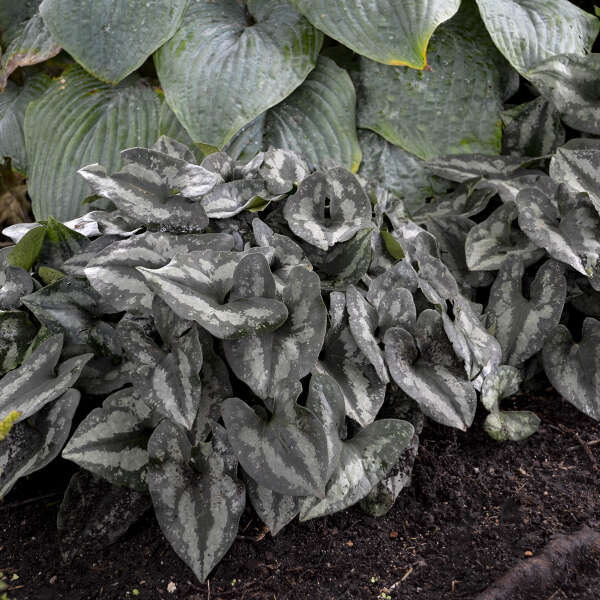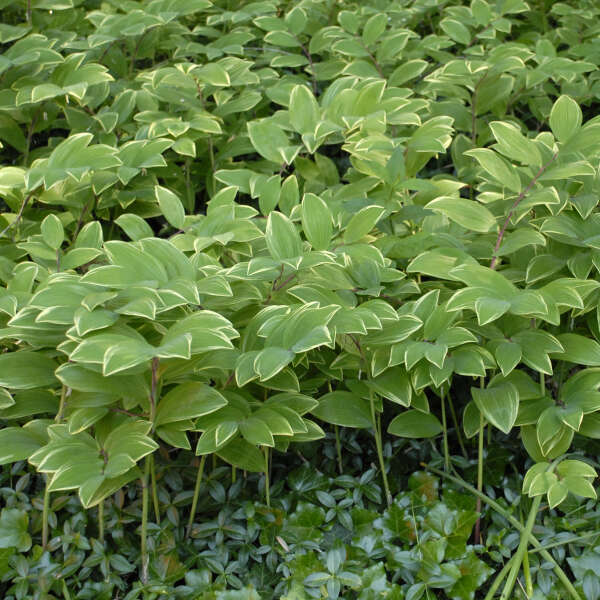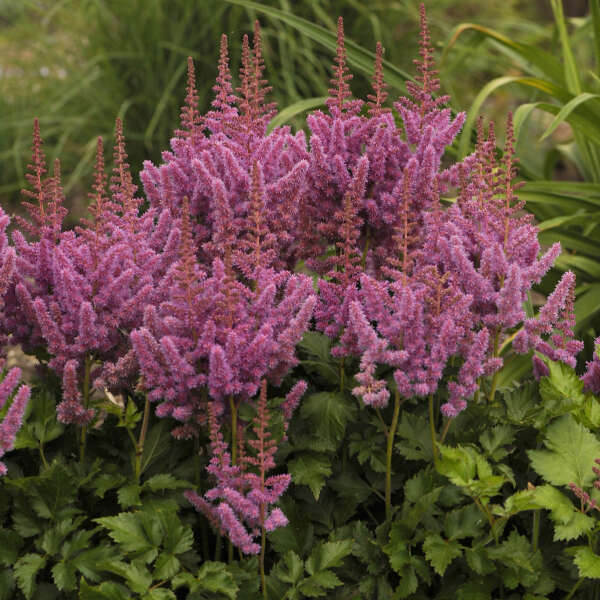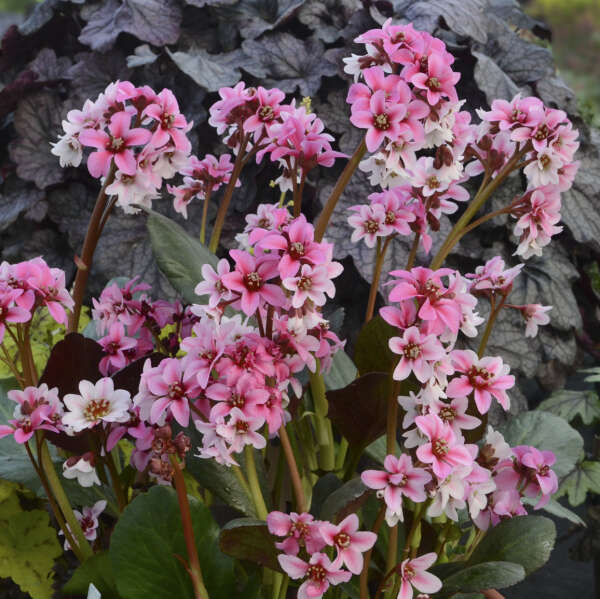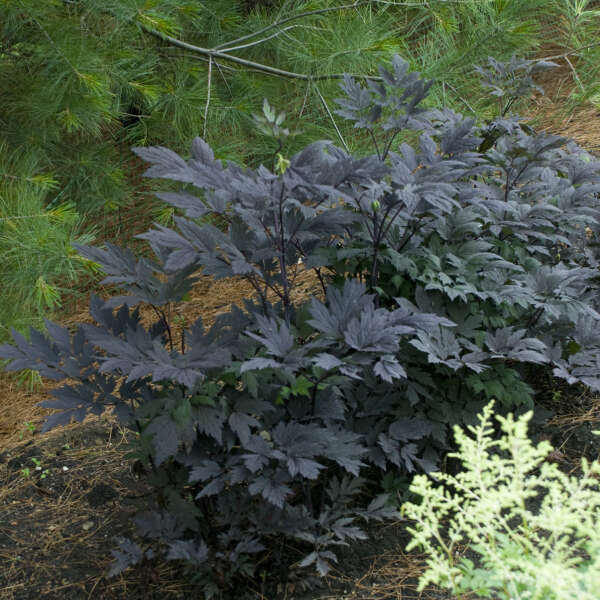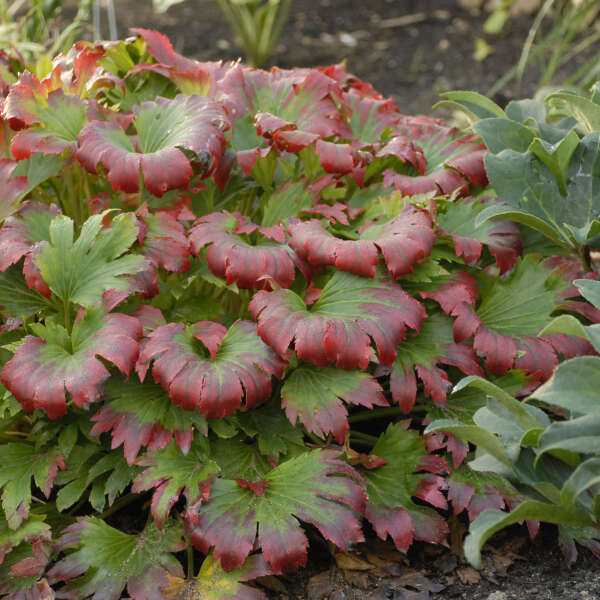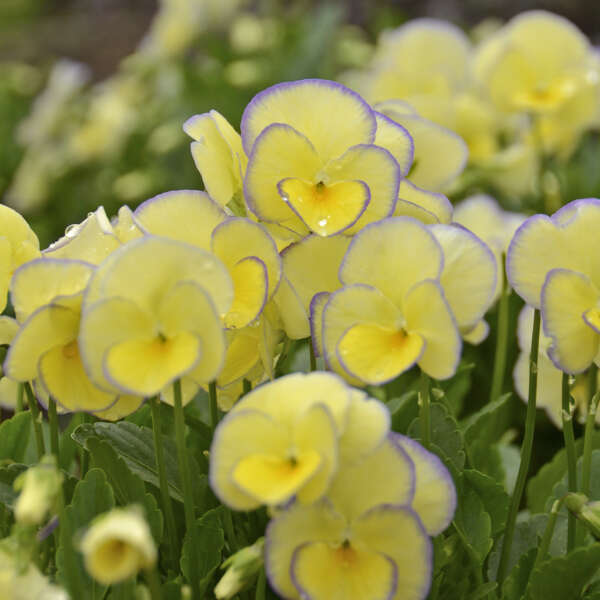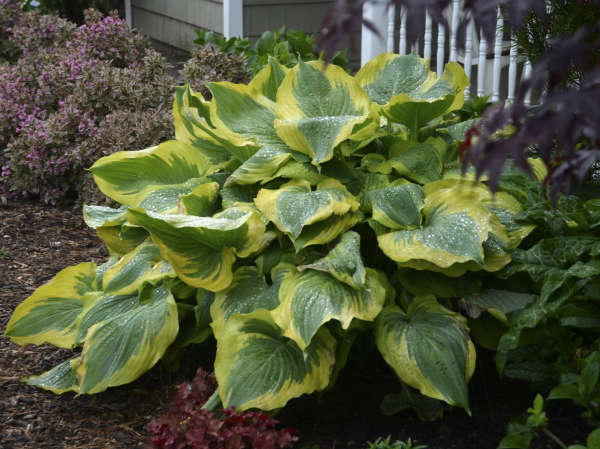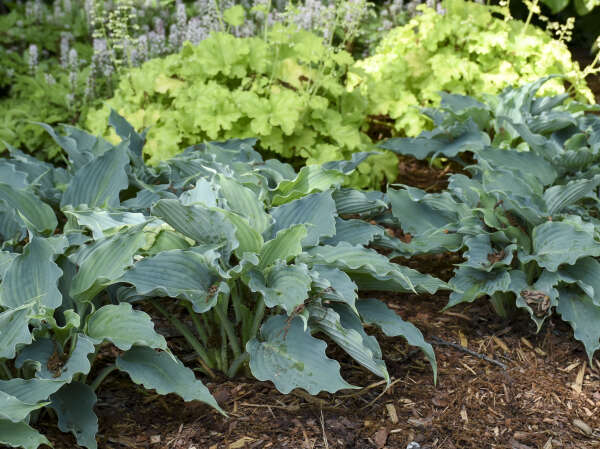Shade Perennials that aren't Hostas, Heucheras, or Ferns
-
1.
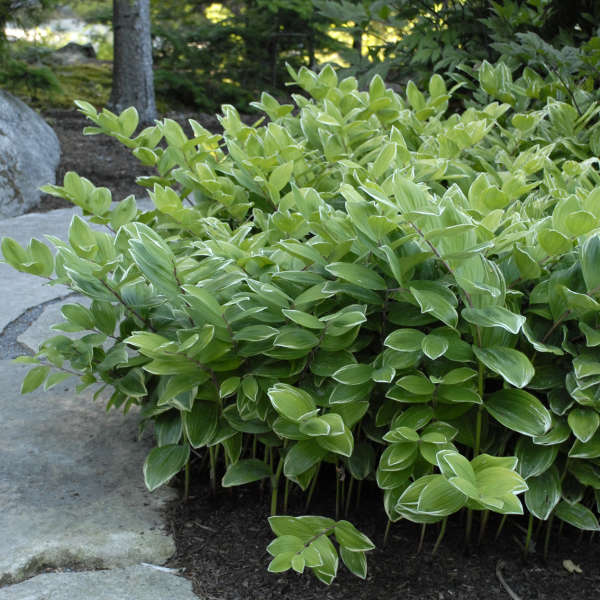
Do you need to fill a shady space but are tired of the classics?
There are thousands of gorgeous and unique kinds of Hosta and we have nothing against Hostas! However, If your garden is all Hostas, it might be time to differentiate.
A boom in Heuchera hybridizing has saturated the market and there's a huge (heu-ge?) range of this perennial to choose from. They're all over the place and consequently, all over shade gardens.
Ferns are fine, but ferns are also everywhere. If you're ready to be finished with ferns, you can start here.
Don't consider this list a knock against any of the plants listed above, we all have these perennials growing in our gardens and we love them! Use this list to find something different or a little farther off the beaten path.
-
2.
Heartleaf Brunnera (Brunnera macrophylla)
Full Shade - Zones 3-8
A popular alternative to the mainstays, Brunnera are a spring blooming plant with a wispy display of light blue flowers - a great way to kick off the season. This perennial is best in full shade with consistent moisture. If you have dry shade - this one will be work to keep nice.
Variety Pictured: Brunnera macrophylla 'Jack of Diamonds'
Learn More

-
3.
Bleeding Heart (Dicentra spectabilis)
Full Shade - Zones 3-9
Dicentra are commonly called 'Bleeding Heart' because of their heart-shaped flowers. This unique shaped blooms will appear in spring on long infloresences.
Bleeding Heart are a woodland perennial and so best planted in full shade. They prefer to be planted in well drained soils that receive plenty of moisture and nutrients. These plants do not grow well in dry shade or clay soils.
Variety Pictured: DIcentra spectabilis Valentine®
Learn More -
4.
Lungwort (Pulmonaria)
Full Shade - Zones 3-9
An early season perennial for the shade. When the flowers fade, Pulmonaria remain interesting with silver or spotted foliage. Try these plants in a shady area that gets a lot of water, such as near (though not in the path of) gutter spouts or roof runoff.
Variety Pictured: Pulmonaria 'Twinkle Toes'
Learn More
-
5.
Goat's Beard (Aruncus)
Part or Filtered Shade - Zones 3-7
If dry shade really "get's your goat," then Goat's Beard might be the perennial for you. Drought resistant when established, this lacey perennial can survive with less water than most shade plants. The more sun Goat's Beard gets, the more water it will need. If planted too deep in the shade, blooms will be more sparse.
Aruncus dioicus is native to North America while Aruncus aethusifolius is not. The variety pictured, 'Chantilly Lace', is a hybrid of the two.
Variety Pictured: Aruncus 'Chantilly Lace'
Learn More

-
6.
Spiderwort (Tradescantia)
Part or Filter Shade - Zones 3-9 - Native to North America
This perennial will grow well in most moist soils. Full or afternoon sun can cause scorching, but these perennials should thrive anywhere from filtered sun to full shade. Varieties with more yellow or chartreuse foliage benefit from filtered sun in order to offer best color.
Variety Pictured: Tradescantia 'Charlotte's Web'
Learn More

-
7.
Barrenwort (Epimedium)
Part to Full Shade - Zones 5-8
Small, airy flowers are produced on long infloresences on these perennials. Formerly thought of only as a groundcover, newest varieties bloom much longer and come in a range of colors. As an added bonus, they're evergreen!
Epimediums are slow growers and benefit from a consistent water supply, but they are capable of steady growth under trees or in drier locations.
Variety Pictured: Epimedium 'Domino'
Learn More -
8.
Hakone Grass (Hakonechloa macra)
Part or Filtered Sun - Zones 5-9
Hakone grass prefers shady, woodland areas with consistent moisture. Areas with heavy clay or little moisture should be avoided.
A slower growing perennial, this grass will not need to be divided for many years.
Variety Pictured: Hakonechloa macra 'All Gold'
Learn More -
9.
Foamflower (Tiarella)
Part to Full Shade - Zones 4-9 - Native to North America
Foamflower are closely related to Heuchera, but they differ in a few ways. In appearance, Foamflower bloom earlier, have more serrated leaves, and frequently have distinctive blotching on the center of the leaves. This perennial will also tolerate deeper shade than a Heuchera, though it is more fond of water.
Variety Pictured: Tiarella 'Cutting Edge'
Learn More

-
10.
Lenten Rose, Hellebore (Helleborus)
Part to Full Shade - Zones 4-9
One of the toughest perennials you can put in your garden, Hellebores are capable of withstanding drought, grazing rabbits and deer, and will outlive your house. They tolerate a range of light levels but perform best when protected from hot summer afternoons.
This is one of the few perennials that will go summer dormant and does not put on much new growth in the heat of the summer. The plus side is it will be one of the first plants to bloom in your yard and will look nice while everything else is still waking up. Try planting Hellebores in garden beds with depth where another perennial can grow up to mask their summer performance.
Variety Pictured: Helleborus 'Spanish Flare'
Learn More
-
11.
Japanese Spikenard (Aralia cordata)
Part or Filter Shade - Zones 3-9
It looks like a shrub, it has the size of a shrub, but it is completely herbaceous. Japanese Spikenard will grow quickly and to a size of 3' tall with consistent watering. The brightly colored foliage is sensitive to heat and drought and will burn if the plant isn't watered consistently. Situate this plant in an area where it will not feel the hot afternoon sun or have to compete with tree roots for water.
Variety Pictured: Aralia cordata 'Sun King'
Learn More -
12.
Toad Lily (Tricyrtis formosana)
Part to Full Shade - Zones (4)5-9
Toad Lilies come up later than most perennials, but when they pop up they put up quite the show! These plants tend to be long lived and require little attention in the garden.
Variety Pictured: Tricyrtis formosana 'Autumn Glow'
Learn More -
13.
Sedge (Carex)
Part Shade - Zones 5-8
Sedges are not technically an ornamental grass, though they are often grouped together. They tend to take more water but also perform much better in the shade.
Variety Pictured: Carex elata Bowles Golden
Learn More -
14.
Lily of the Valley (Convallaria majalis)
Full Sun to Full Shade - Zones 2-7
A speedy grower once established, Lily of the Valley is best in full or part shade but can be grown in full sun. It might take a few years to get started, but will eventually grow quickly and fill whatever space it is situated in.
Variety Pictured: Convallaria majalis
Learn More -
15.
Wild Ginger (Asarum spledens)
Part to Full Shade - Zones (5)6-9
Asarum is a great low maintenance perennial. The foliage is evergreen and the plant will not need much seasonal maintenance. Try this plant en masse as a groundcover.
Variety Pictured: Asarum splendens
Learn More -
16.
Solomon's Seal (Polygonatum)
Part to Full Shade - Zones 3-9
Another great perennial with groundcover uses. Solomon's Seal is a fairly effortless plant to grow though it will spread so plant accordingly. Gardener's with drier shade will be pleased with the tolerance of this plant, though it prefers consistent moisture.
The variety pictured, 'Variegatum', was the Perennial Plant of the Year™ in 2013!
Variety Pictured: Polygonatum odoratum 'Variegatum'
Learn More -
17.
Astilbe (False Spirea)
Part Shade - Zones 4-9
Astilbe will grow in a wide variety of conditions and have great range of use. They can be situated anywhere from full sun to full shade and will tolerate different moisture levels. However, the best performance will come in part or filtered sun with a consistent supply of moisture. If placed in a sunny spot they will need extra watering; in deep shade the flowering performance will be less significant.
Variety Pictured: Astilbe chinensis 'Visions'
Learn More -
18.
Pigsqueak (Bergenia)
Full Sun to Full Shade - Zones 4-9
Bergenia are also called "Pigsqueak" because of the sound they make when you rub the leaves together. If you're too busy to rub the leaves together and don't need another party trick, they are also one of the most effortless perennials to grow in the shade.
Similar to Astilbe, but a little more drought tolerant, Bergenia can grow from full sun to full shade. They are best when grown in filtered or partial shade.
Variety Pictured: Bergenia 'Sakura'
Learn More -
19.
Snakeroot (Cimicifuga ramosa, aka Actaea)
Part to Full Shade - Zones 4-8 - Native to North America
This slow growing perennial is native to the woodlands of eastern North America. Snakeroot will grow in deep shade, but most varieties have near-black leaves which require a little sunlight to achieve best coloration. These plants also do not like to be disturbed so plant with permanence in mind!
Variety Pictured: Cimicifuga ramosa 'Hillside Black Beauty'
Learn More -
20.
Red Leaf Mukdenia (Mukdenia rossi)
Part Shade - Zones 4-9
The foreign cousin of Heuchera, Mukdenia have a similarly impressive foliar display. Unlike Heuchera who typically have their most impressive coloration in spring on new leaves, Mukdenia have tremendous fall color with the new leaves emerging solid green.
Variety Pictured: Mukdenia rossi 'Karasuba'
Learn More -
21.
Violet (Viola)
Full Sun to Full Shade - Zones (5)6-8
Another perennial with excellent range! Violets will grow from full sun to full shade, with more water necessary in sunnier locations. Best results can be found in shadier areas with consistent moisture.
Variety Pictured: Viola 'Etain'
Learn More
